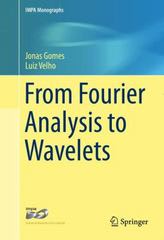Question
Determine if the following could be a probability distribution for a discrete random variable, X. If no, state why. X 20 30 40 50 P(X=x)
Determine if the following could be a probability distribution for a discrete random variable, X. If no, state why.
|
- No, while the probabilities are all positive, the P(X=20)=1.1. Probabilities cannot exceed 1.
- Yes, the probabilities are all positive.
- No, the values of X are too far apart and the probabilities add up to a value greater than 1.
- Yes, the probabilities add to 1 and they are all positive.
Question 4Type numbers in the boxes.Part 1:2 pointsPart 2:2 pointsPart 3:2 pointsPart 4:2 pointsPart 5:2 points10 points
Below is a distribution for number of visits to dentists in one year.
|
Calculate the following probabilities:
a. P(X < 2) =
b. P(X3) =
c. P(1< X3) =
d. P(3X < 5) =
e. P(3 < X < 5) =
Question 5Type numbers in the boxes.Part 1:2 pointsPart 2:2 pointsPart 3:2 pointsPart 4:2 pointsPart 5:2 pointsPart 6:2 points12 points
Below is a probability distribution for the number of failures in an elementary statistics course.
|
Determine the following probabilities:
a. P(X = 2) =
b. P(X < 2) =
c. P(X2) =
d. P(X > 2) =
e. P(X = 1 or X = 4) =
f. P(1X4) =
Question 6Type numbers in the boxes.Part 1:5 pointsPart 2:5 points10 points
From past experience, a company has found that in carton of transistors:
92% contain no defective transistors
3% contain one defective transistor,
3% contain two defective transistors, and
2% contain three defective transistors.
Calculate the mean and variance for the defective transistors.
Mean =
Variance =
(Please round answers to 4 decimal places.)
Question 7Select one answer.10 points
First, find the value of the constant,kso that the following table represents a probability distribution for the random variable,xand then findP(x<2).
|
The probability that P(X < 2) is equal to
- 0.90
- 0.15
- 0.25
- 1.00
- 0.65
Question 8Type numbers in the boxes.Part 1:4 pointsPart 2:4 pointsPart 3:2 pointsPart 4:2 points12 points
A florist determines the probabilities for the number of flower arrangements they deliver each day.
|
Find the mean, variance, and standard deviation of the distribution rounded to 4 decimal places.
Mean =
Variance =
Standard Deviation =
Approximately how many arrangements should the florist expect to deliver each week, rounded to the nearest whole number?
Step by Step Solution
There are 3 Steps involved in it
Step: 1

Get Instant Access to Expert-Tailored Solutions
See step-by-step solutions with expert insights and AI powered tools for academic success
Step: 2

Step: 3

Ace Your Homework with AI
Get the answers you need in no time with our AI-driven, step-by-step assistance
Get Started


